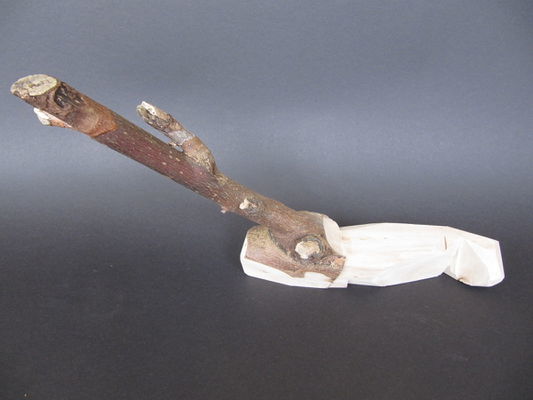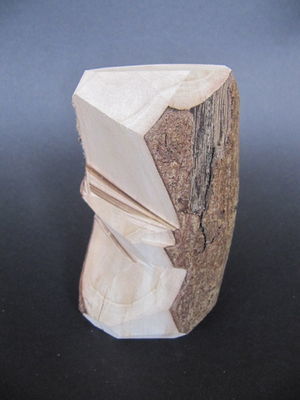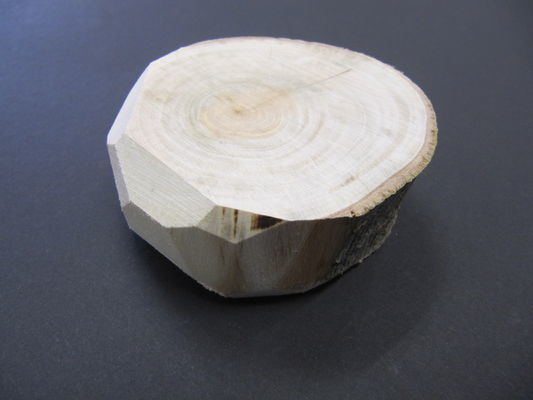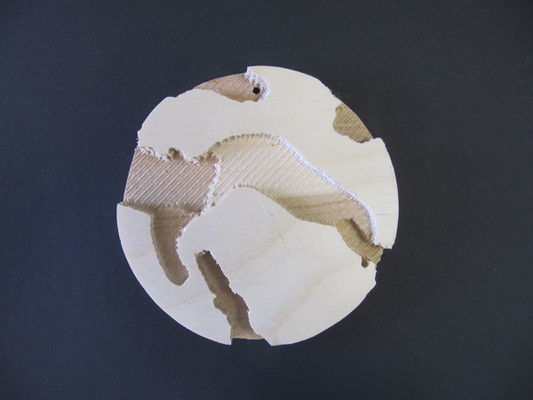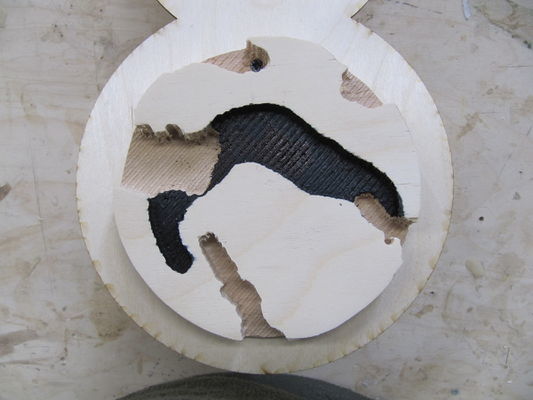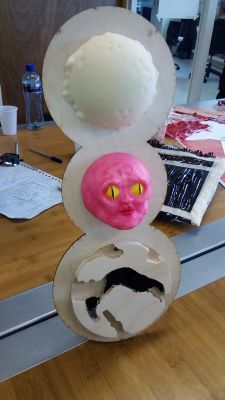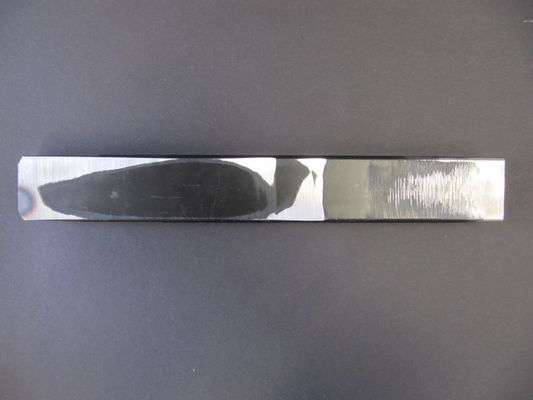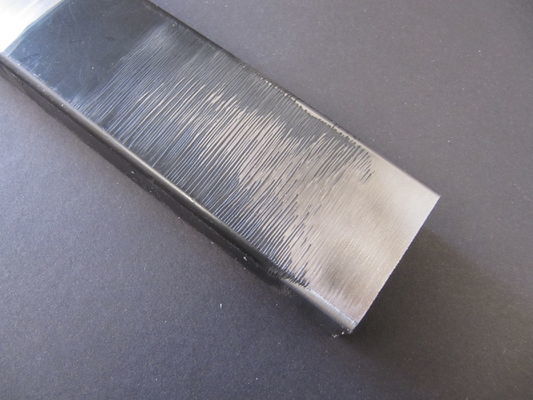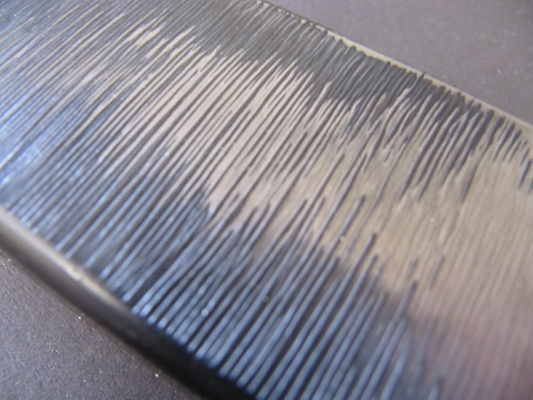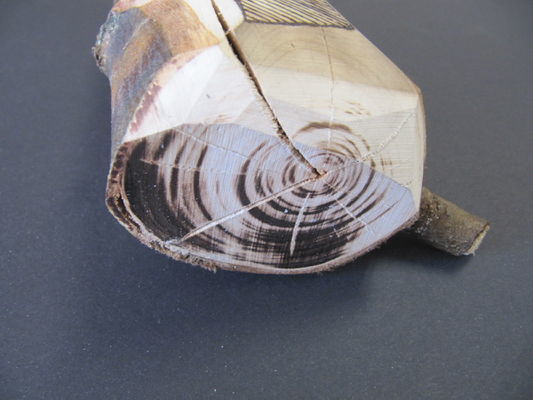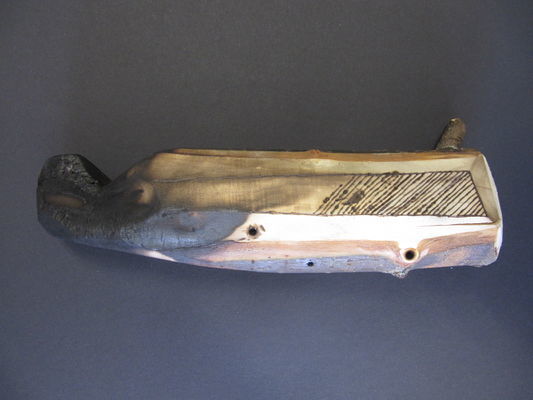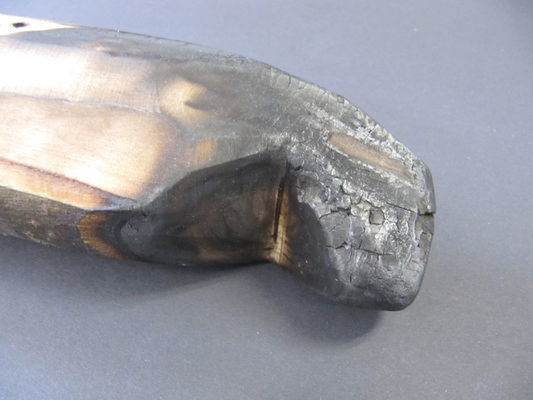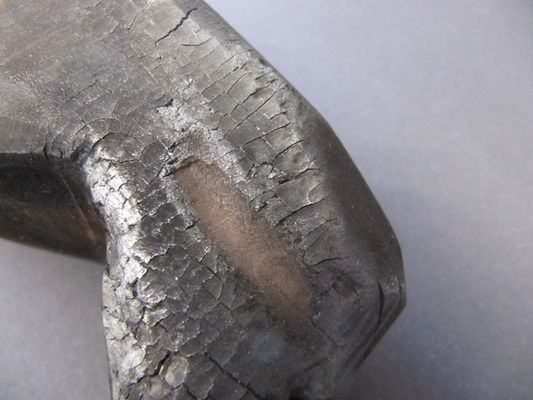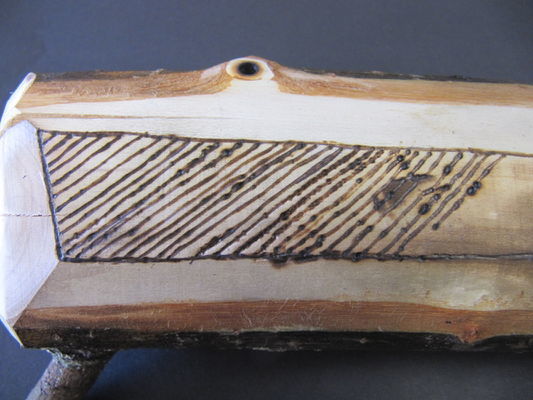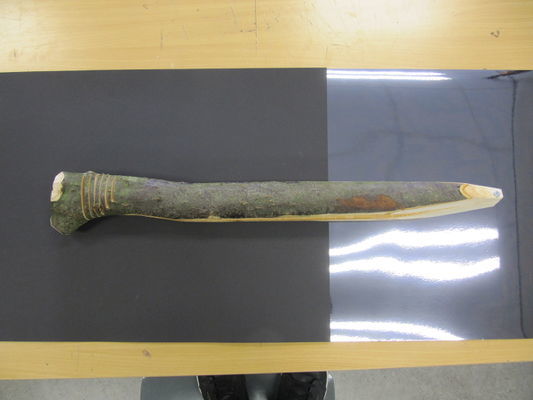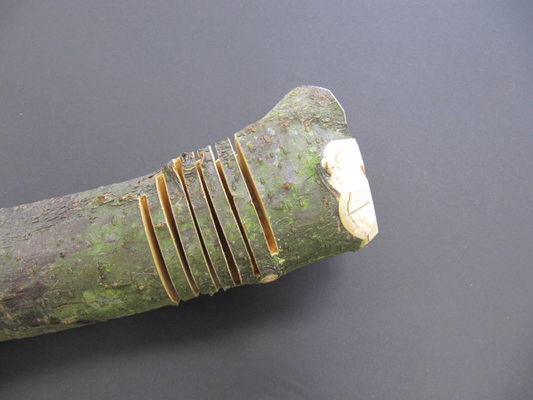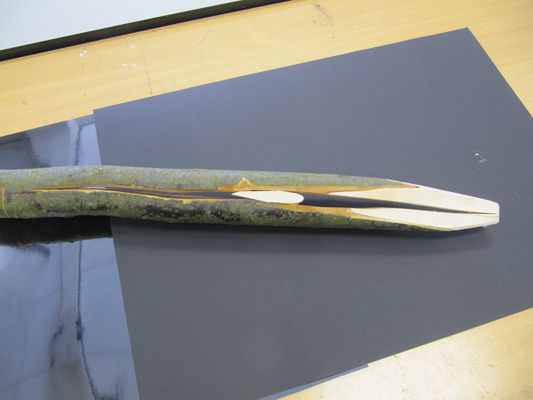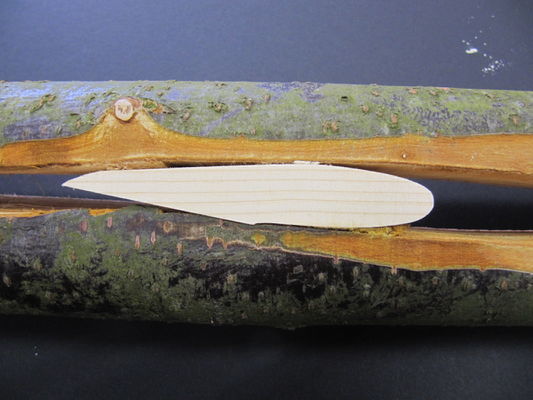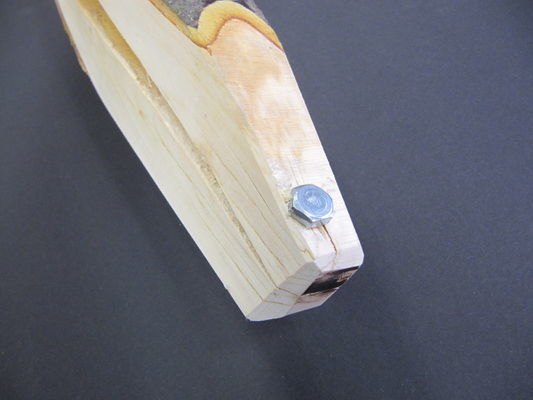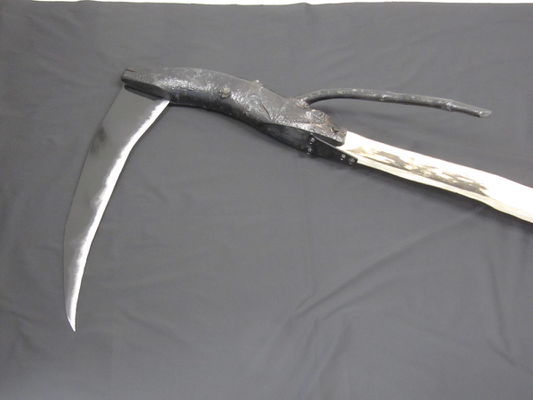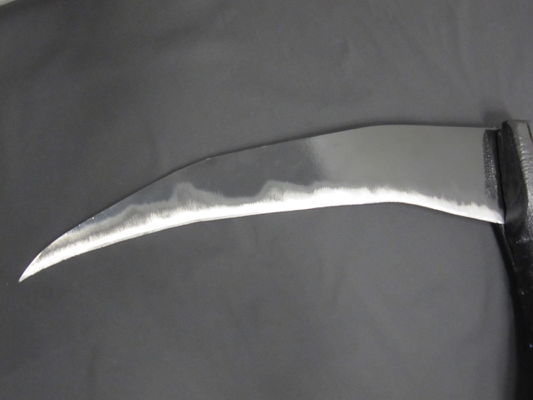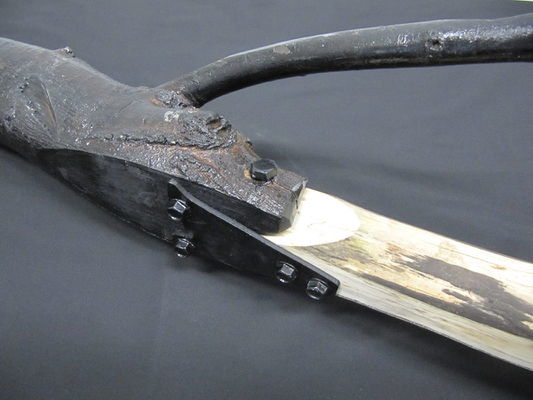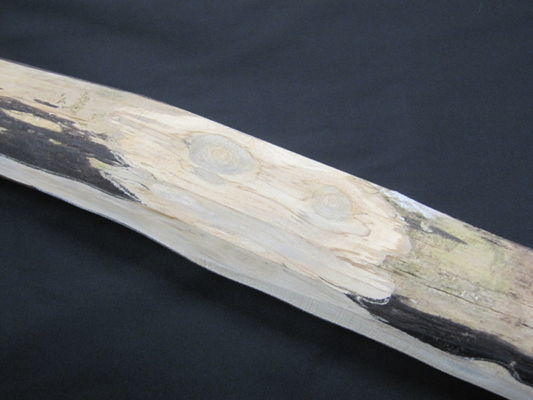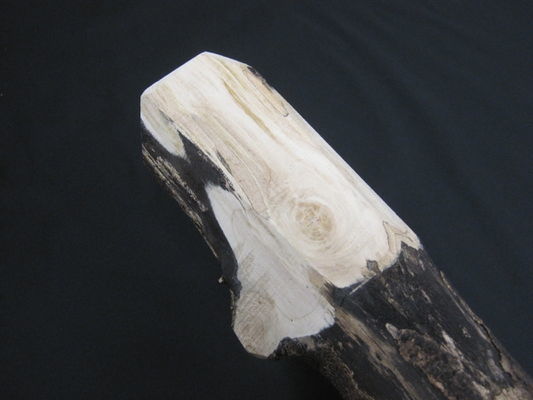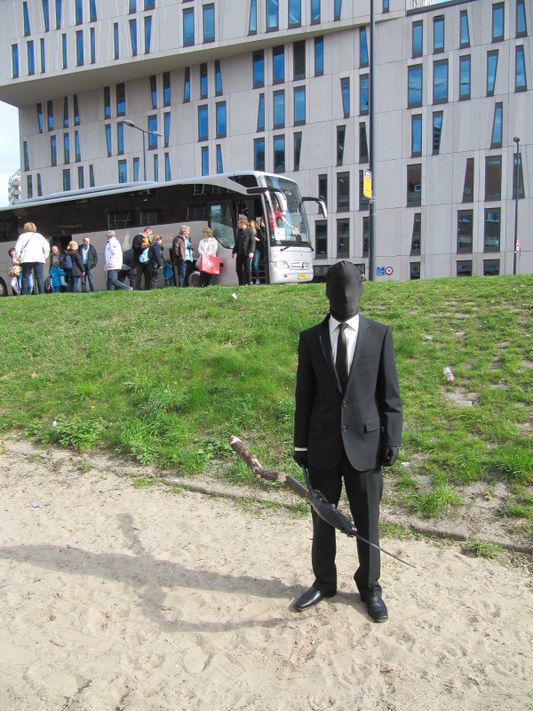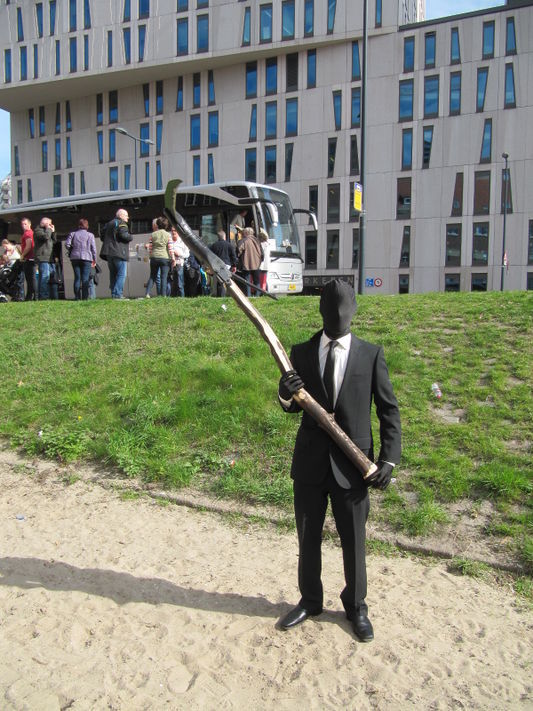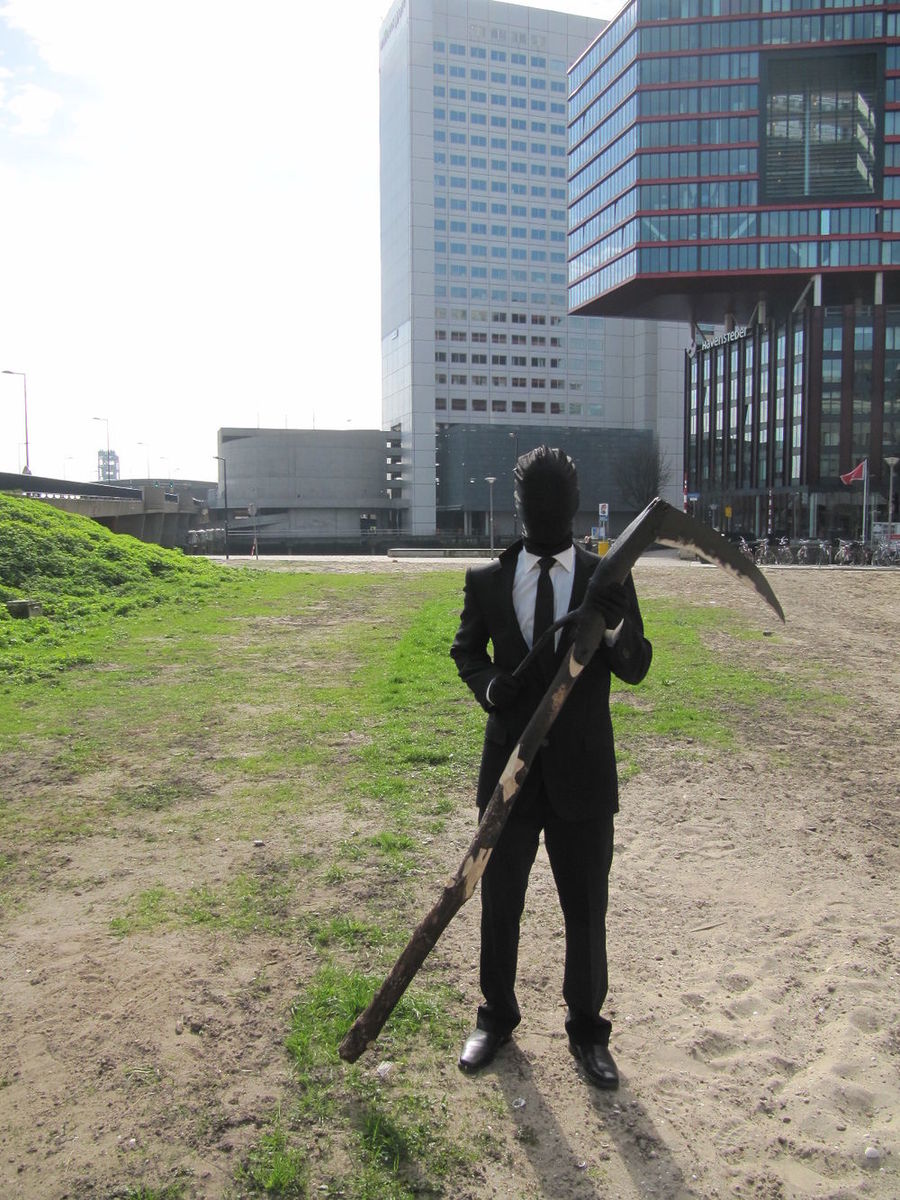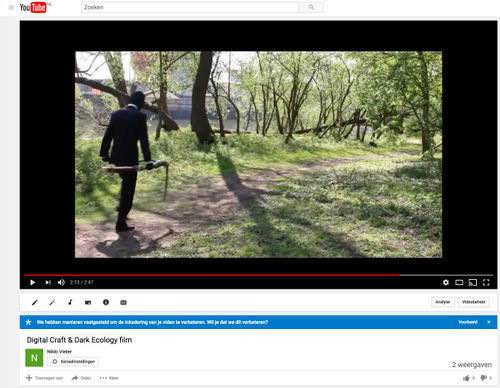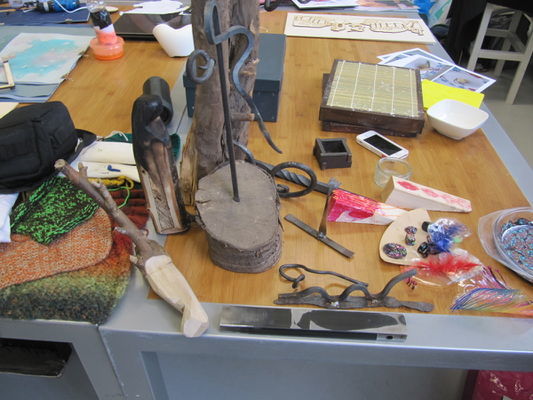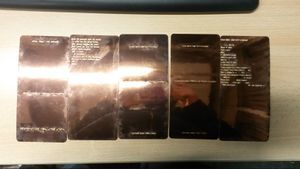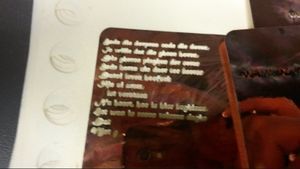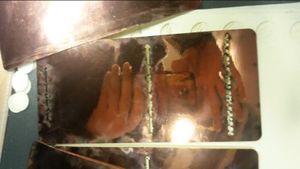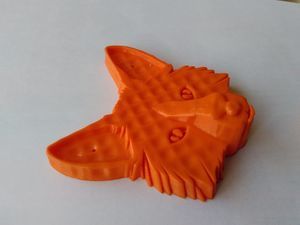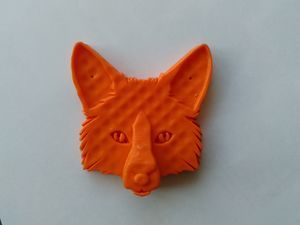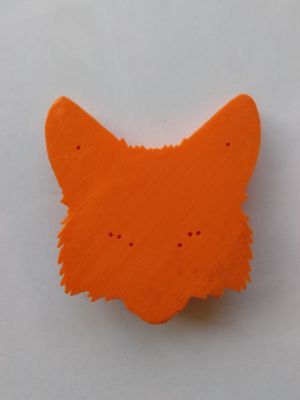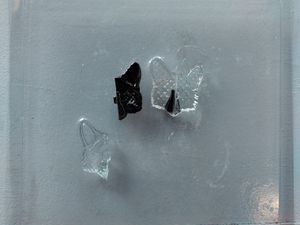User:Nikki Vieler
Contents
About Nikki Vieler
Hi,
I am a 24 year old Product Design student, who loves making all kinds of stuff, but who wishes to explore Digital Craft & Dark Ecology.
I also like to pose tricky questions, as they are the ones that I think we should answer. I don't think critical thinking is posing rhetorical questions that are easily and lazily answered, not that I am making any underlying comment with that statement. I believe that the time we are living in requires a posing of questions, followed by a critical statement, rather than designing the most generic mundane product which no one really needs or wants. Products that communicate a message that is important to society in the whole can be more significant than utilitarian products.
Making is Connecting 2017: Digital Craft & Dark Ecology
Examples
Historical example
I chose Sanding as a carving technique. Sanding dates back to the 1st century China (https://en.wikipedia.org/wiki/Sandpaper). It's a technique that started out by gluing some sand to paper and then using that paper to sand down pieces of wood and metal. It has then evolved over time to be the final touching on crafted piece of wood, metal, plastic (polymers), glass, stone etc. Sandng isn't just about taking a piece of paper andsanding objects down, one can also see it as a practiced craft. A notable example of this is the master burnisher in Leerdam (http://www.hetkroonjuweeltje.nl/pagina4.html). His profession is to burnish glass objects as reparation or as part of the process in
I found some old examples I had made before by simply sanding wood down to form facetted shapes that show how the grains of wood actually manifest themselves in the wood. I enjoyed doing this and the interesting thing about them was that
I then found some pieces of wood near a wooded area near my parents home.
Which I cut and sanded down to make these three shapes.
For the shared example we (Dalit, Chiara & I) decided to use CNC milling as a production technique. I made a circular object that had an image of the fertile crescent on it (and a geological mapping of the countries/area around it). I then put the object in the CNC milling machine and I learnt that I had to rethink future designs for the CNC milling machine as I had designed a too fine an object to be milled. The CNC milling milling machine is actually quite limited to quite crude shapes and large forms. Detailed work is better done by human hands than by a digital CNC milling machine.
Comparative example
For the comparative example I chose to compare sanding and brushing. I took a steel box section from the trash metal in the workshop and I first brushed it on the one side and then sanded it on the other. I really liked the brushed part so I made some close ups of that part. The final results are depicted below.
New skill try out example
As a new skill try out I have taken a piece of sanded down wood and burnt it. I was looking at the work by Maarten Baas and I really liked the idea and the approach to carving/designing (https://www.youtube.com/watch?v=4LklkB2_yBs&feature=youtu.be & https://www.youtube.com/watch?v=dAxrNID9ZIU&feature=youtu.be). So I tried it and it kind of worked. I also really liked the results one could get from pyrography so I tried it a little with a soldering iron (https://en.wikipedia.org/wiki/Pyrography). It worked, but it seems that pyrography also needs some specific/particular tools aswell (http://www.sawdustconnection.com/pyrography-woodburning-tools-review-chart.htm), so I am not sure whether that is a particular technique I could use this quarter. I did however learn that burning is a tricky carving technique to use, as it is not easily controlled. I saw this as both something that could produce interesting results, but could also be very problematic if one needs to control it.
Material pushed to the limit example
The material I will push to the limit is wood. Wood is an old material (in the sense that trees have been around for a long long time) and it's a material that has many character traits (Hard, soft, bendy, dense, etc.) and forms (Hard wood softwood, bendywood, lacquered,veneer, bambooplastic etc.). Adding to this I also tested the logic of the of carving by fusing the pieces of wood together by using a screw to screw them together. In my different type of logic (Dialetheism, a view that some statements can be true or false at the same time: https://en.wikipedia.org/wiki/Dialetheism) I take a stance that carving can also be fusing. Something one can be free to disagree with if you wish (Jon, you may disagree with me as much as you wish about it, but I do take this view on the matter), but I would like it if we are allowed to take non-western essentialist logocentric stances. I hope that it is allowed.
Final Artefact
As I like to take concepts and add them to designs, I have decided to take concepts with which I can connect to digital craft. These two concepts are Dark Ecology & Agrilogistics. Considering that Agrilogistics is the fundamental concept that sustains a notion of a Dark Ecology, I want to explore this by making a digitally crafted scythe.
Here are some detail images:
The final results are pictured below...
And the final pose...
The video I made for the scythe...
Written statement & Poster
Why I make
Making can connect us to the Dark Ecology that we are currently forming.
Making allows us to create an intimacy with our ecology through material experimentation.
Making is part of the agrilogistic process, with which we keep ourselves (Humans) alive to kill ourselves later (through ecological devestation).
Making can help us make up with our ecology that we live in.
Making is realizing that the digital ecology and planet earth's ecology are connected.
The Statement
The document I have written is the following:
File:Digital Craft & Dark Ecology - Connecting ourselves to Dark Ecology & Agrilogistics.pdf
It has +-1500 and I hope it is worth the read.
I hope no one is annoyed by the amount of words I used.
Added texts
File:Texts from Post digital artisans.pdf
File:Product Design & Dark Ecology An essay by Nikki Vieler.pdf
Poster
File:Poster Making is connecting.pdf
Group Exhibition
In the group exhibition I placed some of my samples amongst some samples of a class mate as the visual aspects where similar.
Then I also took my material-pushed-to-the-limit sample and my final crafted artifact next to the final crafted artifact of another classmate whose was similar in content. The work was made by Max Terpstra
Making is Connecting 2016: Van den Vos Reynaerde
To start off, I will state that my making technique that I will use for this quarter is fusing & bonding (additive), which could be an interesting technique to make a book.
After that I would like to state that I will use gluing as a historical technique and that my comparative technique will be 3d printing and casting.
My technique that I have never done before will be wood joinery or wood laminating.
I would also like to pose questions with my work. In particular, I would like to pose questions concerning the definition and our understanding of craft.
Why do we view craft exclusively as a human activity?
This is my main question for this project, one that I will follow up with a product that questions the notion of craft being exclusive to human beings.
I do not wish to change our idea of craft from being a human thing, but I don't think it is wholly logical to consider craft a human thing. I wish to question this idea. After all, don't birds make nests, spider's weave webs, beavers build dams and ants create huge colonies? Is there no craft in this? Is craft something made purely by hand (in which case a monkey could also be a craftsman)? This is the notion and definition that I am trying to contest in my work. I wish to explore the boundaries of craft by making a book that tells the old Epos called "Van den Vos Reynaerde". Through this I wish to question and hopefully push craft beyond it's conventional boundaries into new a understanding of making by hand.
Work
Techniques assignment
Historical Example
Adhesive/Gluing/Lijmen Research
See PowerPoint presentation: File:Adhesive research.pdf
Adhesive/Gluing/Lijmen Work
First ideas/making of glueing examples
I wanted to glue together pages I cut out of parchment with some rabbit skin glue. I first cut out the first pages that I wanted to use for my book on the laser cutter. I then stuck tese together to form a book like form. I then wanted to make space for the text to be put in. I wanted to copy the text from a book and glue (paste) it into the new book by using rabbit glue.
I decided to use copper paper to form the base of my book. I cut the text out on the laser cutter, but things didn't work out as I had planned...
I then tried to glue together some pieces of parchment I had cut out with the laser cutter/ so that I start with the making of my intended final product (a new copy/bookwork of the Dutch Epos of Van den Vos Reynaerde).
[[File:|thumb|Caption]]
Comparative example
I wanted to make a comparative example of two techniques, 3dprinting and resin casting. The idea was to look at what the options are in casting and printing and two see how they relate to each other visually and content wise.
I started by making a foxhead in a 3D CAD model. Then I printed it out to see what it looked like and to use as a part in the making of the mould for my intended comparative example. After that I printed a half part out to use in the example I was making. I then went to the vacuum forming machine in the ceramics workshop and placed both examples in the machine. Then I tried to use the mould I had made to create my comparative example. I cast the printed piece with some polyester resin in an attempt to create the comparative example. When I tried to take the example out of the mould, it broke and I was not amused.
After that I looked back at my original print and realised that I had actually made a comparative example by using the vacuumforming machine to give the 3d printed object a much nicer looking texture and by doing so revealed the thin walls used to make my print cheeper and faster to make/print. I decided that this was my comparative example and that this insight into reworking 3d printed objects is quite interesting.
A New Skill-try Out Example
I have chosen (wood) joinery as the technique I wish to try out and discover and learn something about, work will follow...
Statement
First Draught Statement
File:Digital craft statement.pdf
Why I make I am a human being, I am what I make of myself, even if that is for better or for worse. I make because I can connect to myself and through connecting to myself, I can connect to others. One can philosophize about being made by oneself, but I just like to believe that I make myself and no one can steel or break that. The next step is to realise that I am not just the only person on the planet and that other people also try to make themselves. So this making is a shared experience. By seeing that, I realise that I also need to look beyond my own Idea of self-making. We all are making ourselves and we should share this. Therefor I make to share myself with others who make. I don’t believe in the facebook sharing, but in the genuine unregistered free sharing of ideas and attitudes.
We shouldn’t just share the things we make with ourselves, but we should place this in a context. Our context (as human beings) is nature (which evolves with time passing by) and this idea and practice of self-making should be placed in nature. We should not forget nature’s power, abundance and presence in our world. I will get back to this later.
I will make myself through art, craft, technology and thought. I pretend to be philosophical, but all I am really trying to do is to think a new way of getting me though the life that I am thrown into. This is a little confusing, but in the end it can make sense if no one trips me up at the end. I try to hold onto the ideas as much as I believe that I can hold onto myself and hold onto craft.
Craft has a rich history which to some extent has been preserved in books and literature. William Morris was a producer of books/owner of a books company and I loved it when I read that. I love books. My deepest interest lies within books that sometimes are beyond my attention span and before my time, but if it is in my hyperfocus, I can tear through it like a wolf tears through a little lamb. I love reading philosophical books (such as Being and Time, Being and Nothingness, In praise of Folly and Of Conduct of Understanding), but I also enjoy books that have some historical narrative (Van den Vos Reynaerde, Dam busters, Philosophy of History) to them. I also have a slight obsession with design books (that would be an understatement) and I love seeing any new design books and books of any new design. I also love a book that has been well designed (Irma Boom is one of my favourite designers).
I have a love of books and of the way they can connect us to people, ideas and history. I believe we quite often neglect books in preference of digital media and that this isn’t really a progressive attitude or approach to dealing with complex thoughts and social life. My belief is that we should go back to reading books (after all the bluelight on our screens is extremely detrimental to our melatonine levels in the brain), but that this should not be done in a regressive manner.
Books should be about finding tranquillity in the hectic modern daily life. Books should be about connecting ourselves to the past, without ignoring the present. I am no bible lover, nor am I a TV junkie, I just love books and what they connect us to. I am a human being who believes that literary progress can be done through digital media, without the destruction of the book itself and without the neglect of digital production.
Digital books are not really books. My idea of a book is of something tactile. A digital book miss the tactility of conventional books. This is a shame, as it disconnects us to the story being told, and the cohesive feeling we create with narratives. A book to touch is a book to connect with. I am not a fan of Amazon Kindle, Bol.com Kobo or any other digital platform for e-books. I do not neglect the possibilities that the offer. I am just adamant in my belief that books just can’t be wholly replaced by digital media and that digital media can contribute to the creation of new types of tactile books.
A way to creating new things and connections is fusing and bonding. This will be the productive narrative in my work. I will take 3d printing, heatpressing, embossing, gleuing and any other form of material fusion and bonding to make my own little book. The idea is that I will fuse digital creations, tech and love into a well crafted book. Something to treasure and love.
When I was a teenager at school, my teacher presented us with a story. A very old dutch fable, called Van den Vos Reynaerde. It is a vicious, yet inspiring story of a fox who criticizes and fools the animal kingdom for the folly in believing too strongly in their own making. This is something that seems lost in our time and I believe it needs to be brought back to the present day.
An old story in an old book can not be ignored any longer when it is remade...
Five sentence statement on Why I make?
Why I make?
I make to connect people with themselves and others.
I make to connect people and animals.
I make to connect technology and literature in a meaningful way with people and animals.
I make to connect with myself.
And by making I connect myself to everything that is not myself.
